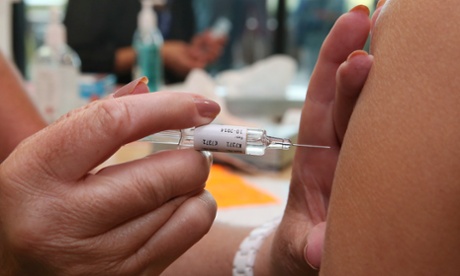At least 20,000 cases have been confirmed, but experts say this is only the ‘tip of the iceberg’

There have been at least 20,000 cases of flu in Australia this season, more than double last year’s number, with the traditional September spike still to come.
Young mothers have been identified as the group most at risk of catching influenza, with experts saying the official numbers are “only the tip of the iceberg” when it comes to how many cases of the flu there have actually been this year.
There have been 20,979 lab-confirmed cases this year, according to the Influenza Specialist Group (ISG), but influenza expert Dr Alan Hampson said doctors only sent influenza swabs to the labs for very serious cases so a big chunk of flu cases – people who did not see the doctor when they had the flu or people who went to the doctor but did not have an extreme case – were missing from the data.
“The numbers fluctuate from year to year. It depends on a range of things. This particular virus circulating is the so-called swine flu and it’s interesting, this virus has a greater impact on younger people, including younger healthy people,” he said.
Hampson said the latest strain of flu was similar to what had been experienced in the northern hemisphere and had come over on “jumbo jets”.
He said women made up the majority of cases in the statistics and young women were highly represented.
“This either means they are getting the flu more than men, or they are getting more serious cases than men,” he said.
The majority of recorded cases of influenza have been in Queensland, where there have been 5,959 lab-confirmed cases. NSW has had 5,375, Victoria 2,473, SA 1,797, WA 1,722, NT 331, Tasmania 197 and ACT 284.
Hampson said there was still about six weeks left of what is colloquially known as “flu season” and it was likely people still had time to get the vaccine, but at this stage it was more important to avoid crowded places and make sure people washed their hands.
He said take-ups of the flu vaccine were relatively low even among at-risk groups, so the general population was not protected at all.
He said women were more likely to get the flu as they often had more contact with children, who were notorious carriers of germs.
“It’s important when people do catch it to rest, don’t try to soldier on, you’ll just make it worse,” Hampson said.
